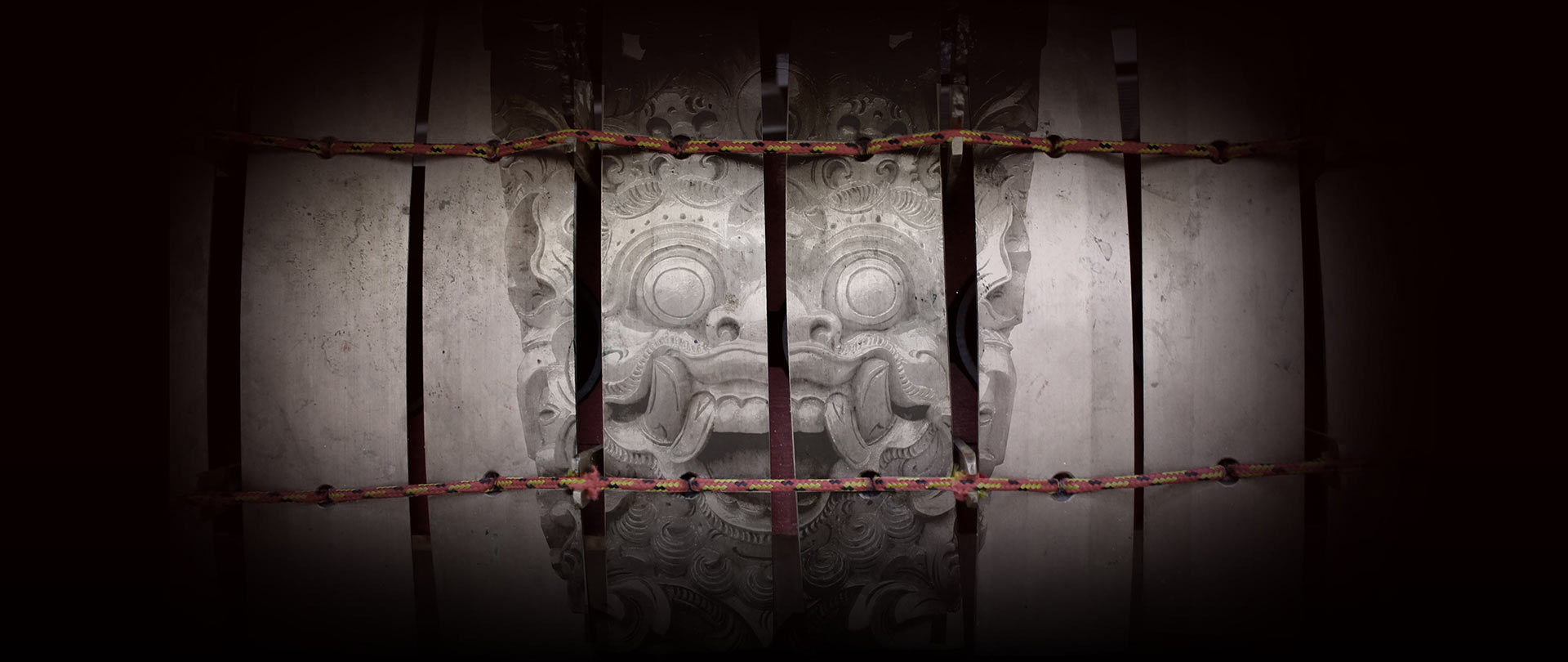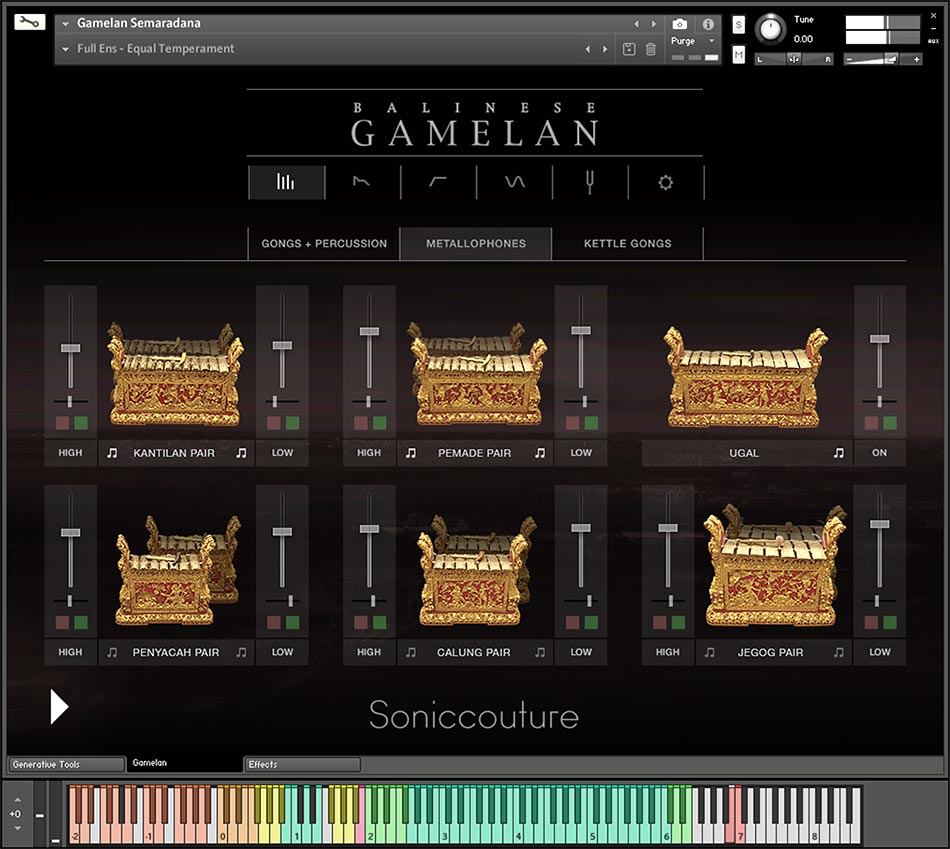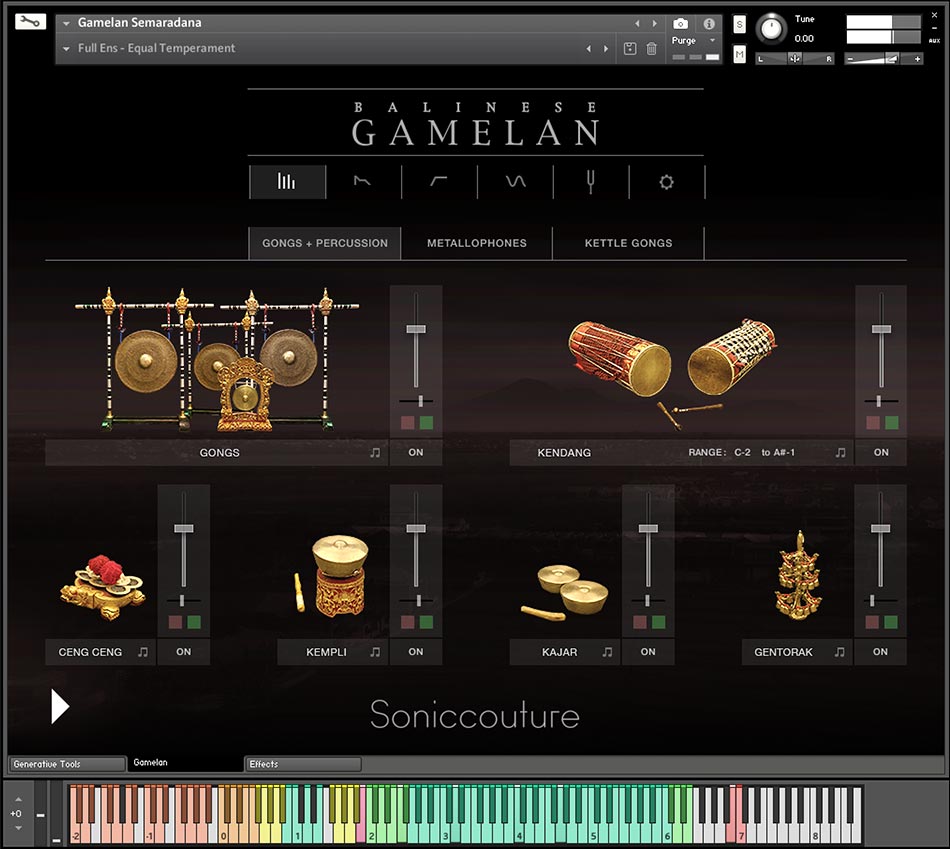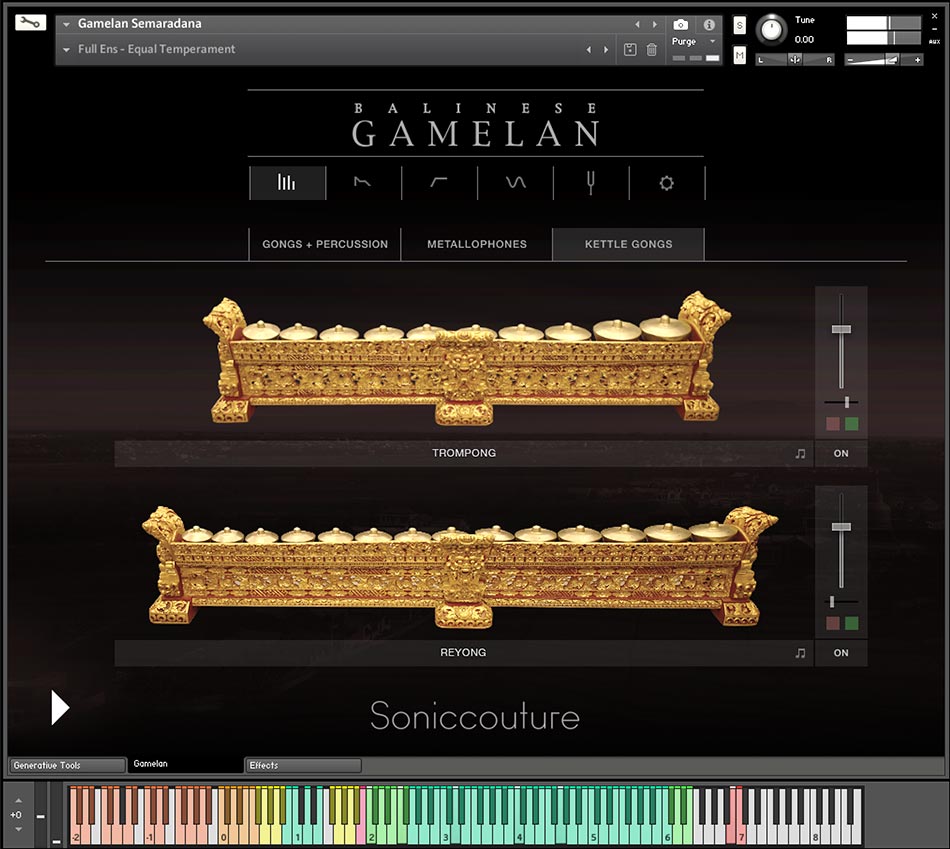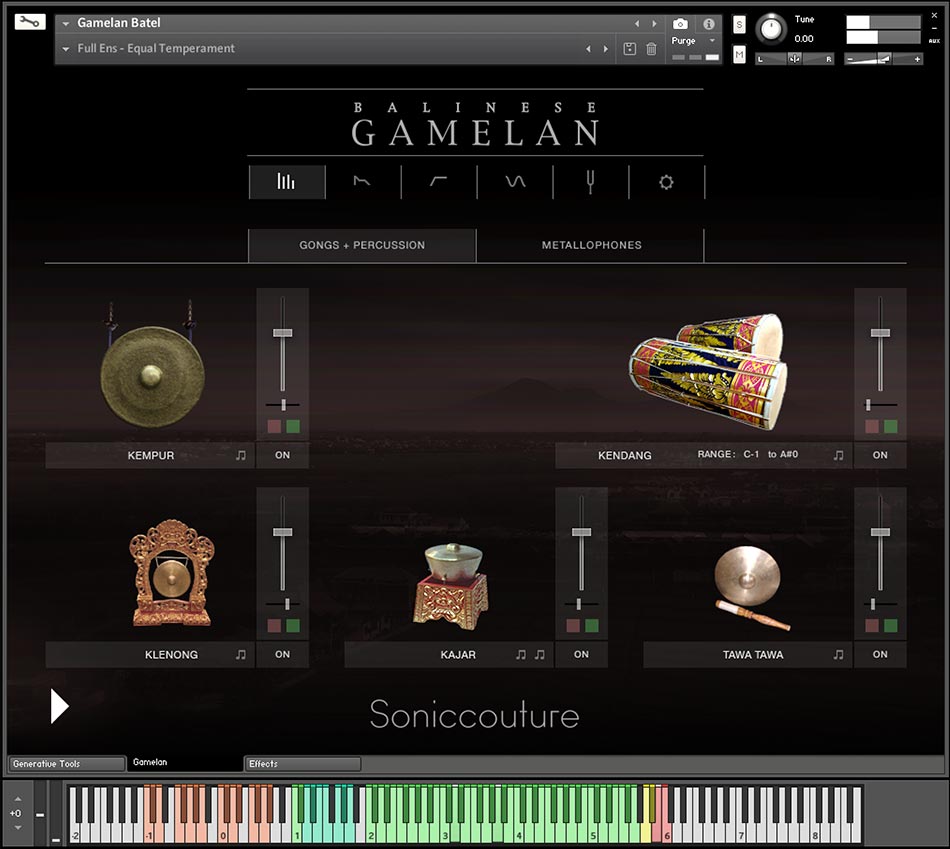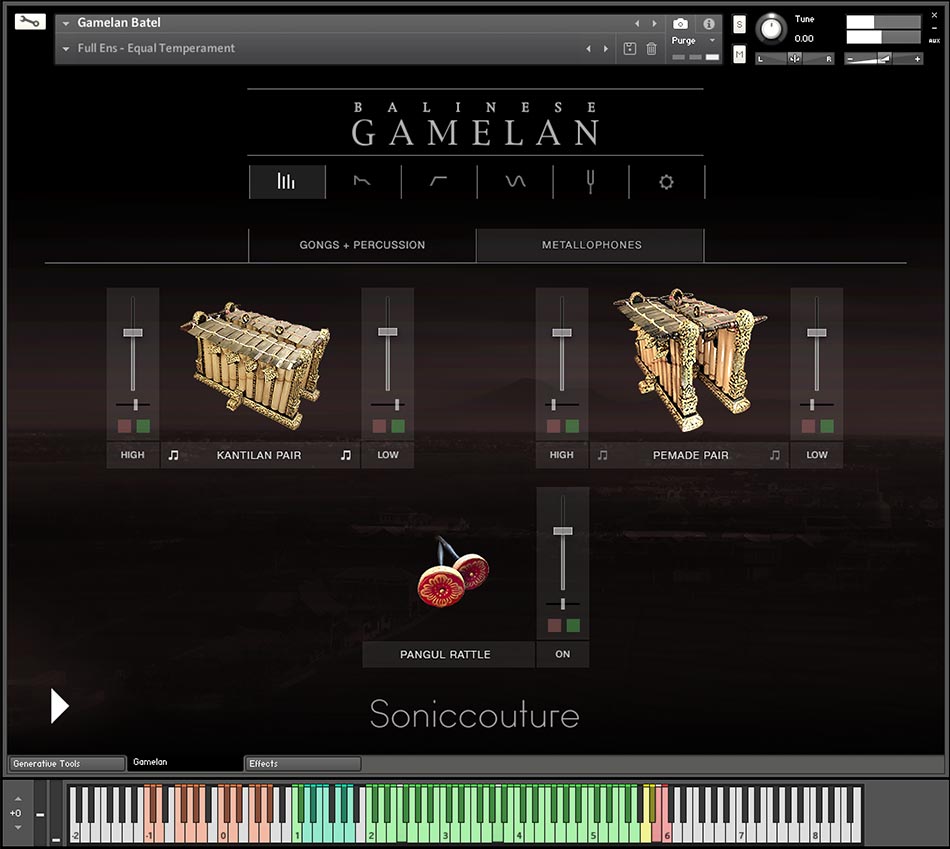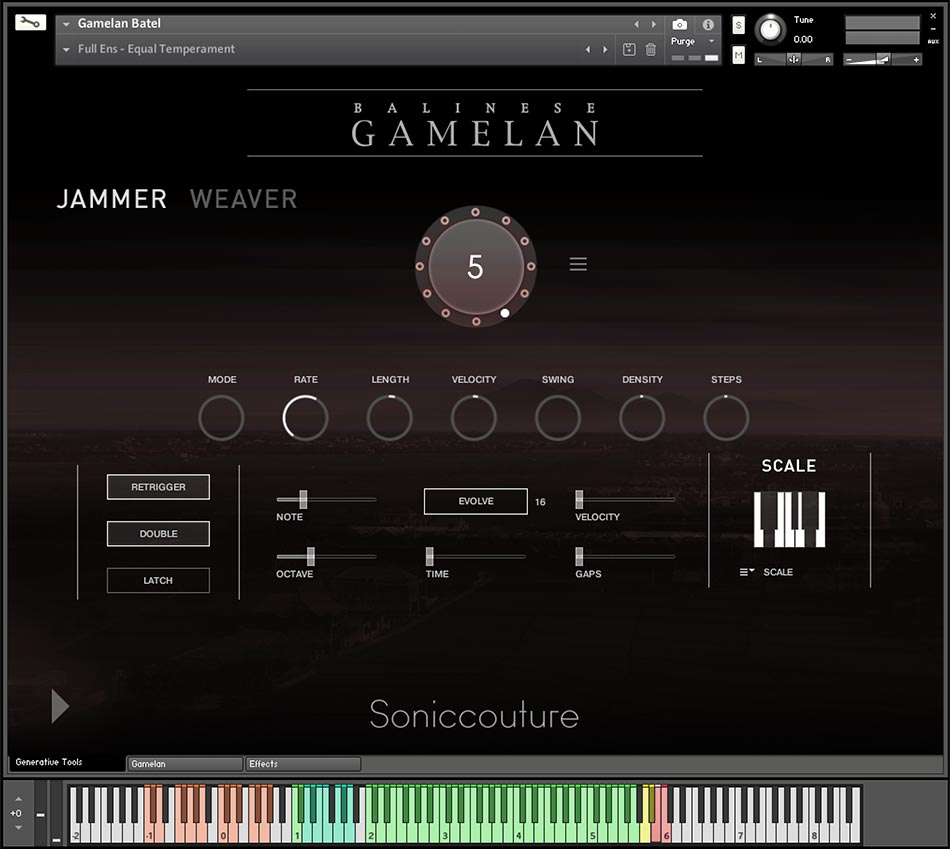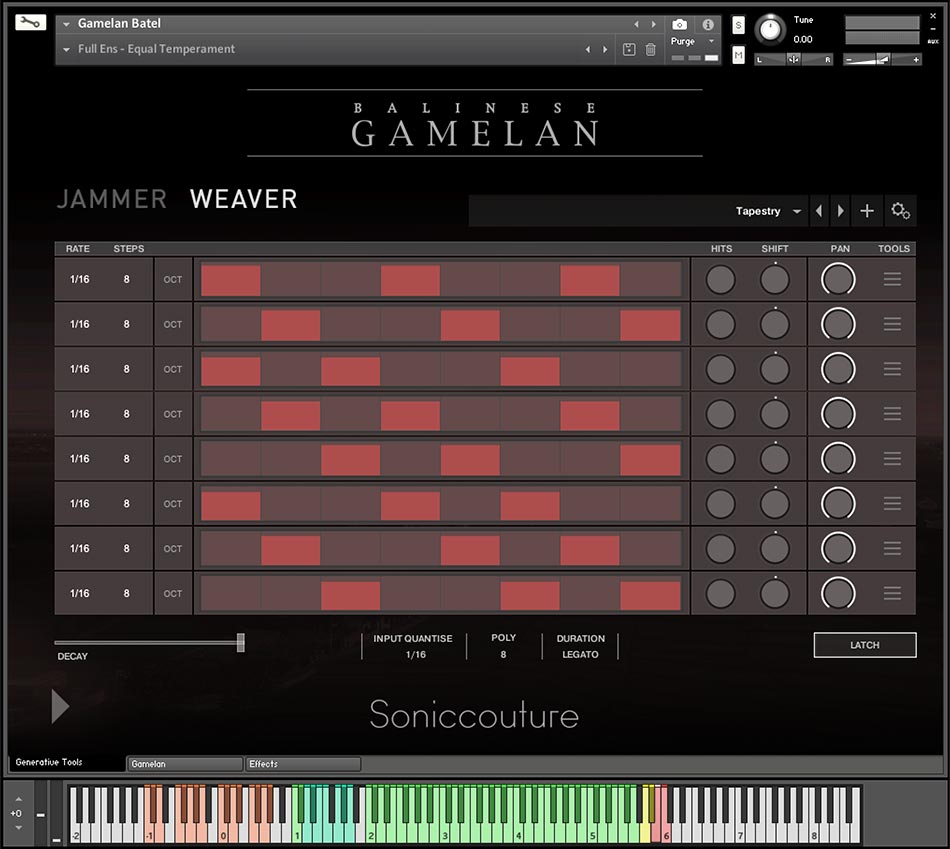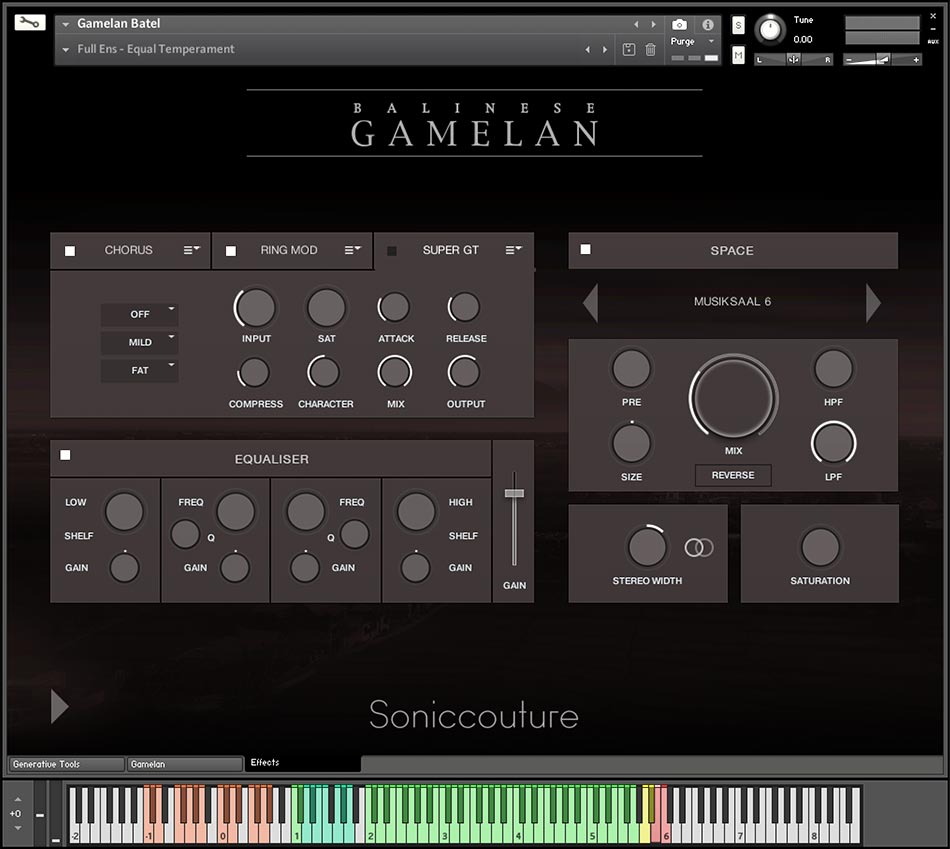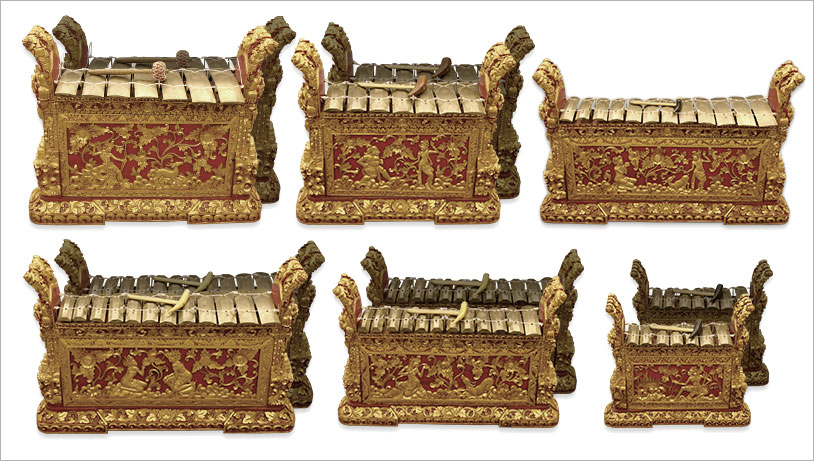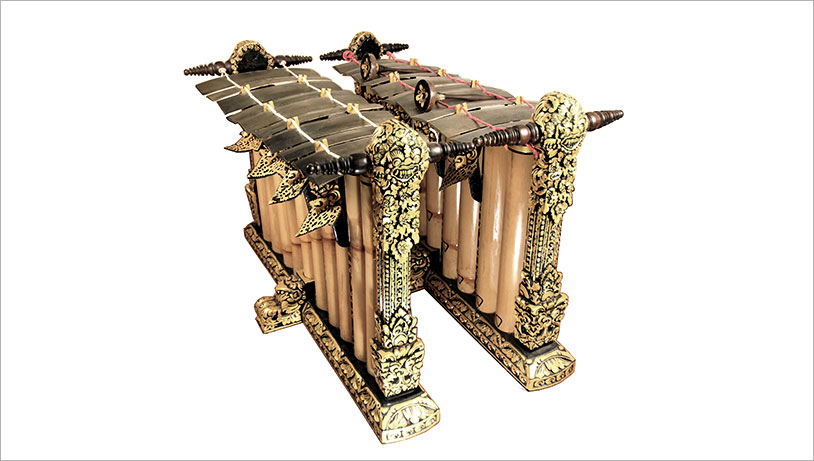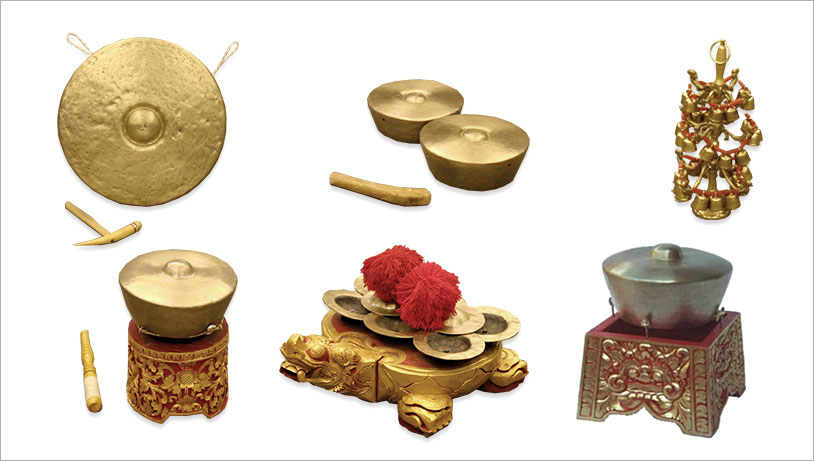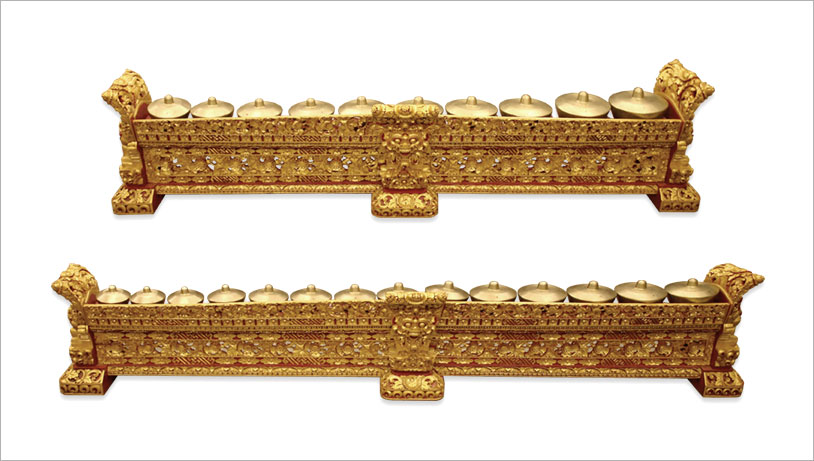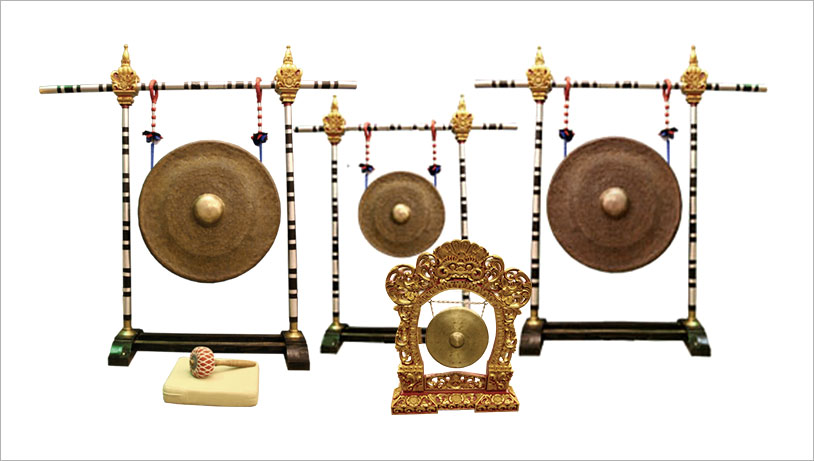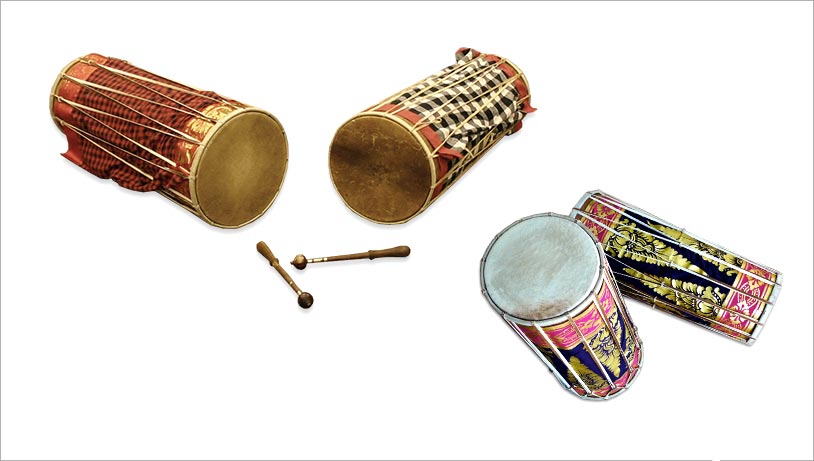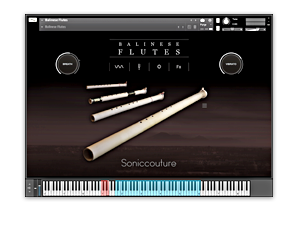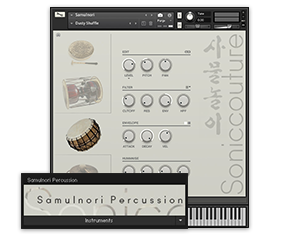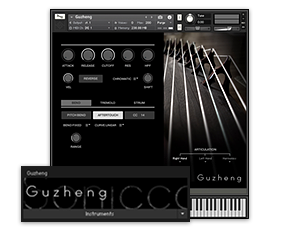BALINESE GAMELAN II
THE DEFINITIVE COLLECTION
BALINESE GAMELAN II
THE DEFINITIVE COLLECTION
- Over 30 Instruments
- 2 gamelan ensembles
- 34GB Library
- Kontakt Player NKS
Soniccouture Balinese Gamelan II is revered among composers. Featuring two full ensembles, it is by far the most authentic and complete sampling of gamelan available.
Play individual instruments or the whole ensemble at once - complete control over the gamelan for experts & newcomers alike.
Over 30 different instruments were recorded in great depth to capture the living, breathing sound & dynamics of gamelan:
- Semaradana Gamelan Ensemble (LSO, London)
- Gamelan Batel Ramayana (Toronto)

"Brilliant and totally authentic, this is a tremendous resource and a beautiful, colourful, complex set of sounds."
Sound On Sound Magazine
"Brilliant and totally authentic, this is a tremendous resource and a beautiful, colourful, complex set of sounds." - Sound On Sound Magazine
CINEMATIC RESONANCE
The pulsing, resonant tones of Balinese Gamelan II can bring unsettling moods to unexpected places.
One of our favourite examples of this is in S4 E3 of Breaking Bad. Composer Dave Porter is a long time user of our instrument.
Walter White contemplates his secret lab as the gamelan gongs and jegogs throb forbodingly in the background.
THE KONTAKT INSTRUMENTS
GAMELAN CULTURE
Gamelan is an ensemble of instruments originating from Indonesia. The majority of Gamelan instruments are percussive, and most of these are bronze. They include xylophone-like metallophones of different sizes and pitch, tuned gong chimes, very large pitched gongs, and an assortment of drums and percussion. There are many types of Gamelan ensembles, but the two dominant types are Javanese and Balinese. Balinese Gamelan has a characteristic 'shimmering' sound which is due to the detuning of paired instruments playing the same musical part.
Although Gamelan music has been around for centuries (there is evidence of instruments existing before 800 AD), it is very much a living music in Indonesia, and is growing in popularity in the west. Styles keep evolving and new Gamelan music is being written all the time. Balinese "Gong Kebyar", a particularly flamboyant style, has dominated much of the century and is probably Bali's most famous export.
Gamelan music is very much about the collective - it has been described as 'a negotiation between musicians'. Many of the musicians play interlocking parts, in which alternate notes are shared between two instruments. This technique enables the ensemble to play incredibly fast passages.
GAMELAN INSTRUMENTS
| Balinese Gamelan II In Detail |
|---|
All sampling in 24bit 96khz stereo |
Adjustable key-off level + multiple articulations |
MUTE + RING samples (key-switched) for all pitched instruments. |
3 to 20 round robin layers and up to 15 velocity layers depending on instrument |
Total library size 35GB (14GB with NCW compression) |
Approx. 8000 samples |
Full control over tuning: equal temperament and microtuning |
102 snapshot presets for quick selection of instruments and sound design presets. |
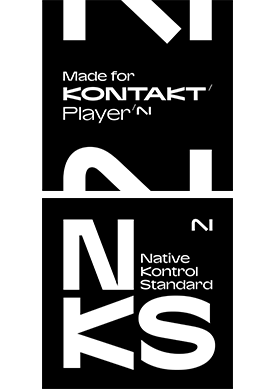
KONTAKT PLAYER 7 COMPATIBLE
This is a Kontakt Player instrument. This means that you do not need to own the full version of NI Kontakt to use it. It will run as a plug-in instrument in any VST/AU/RTAS/AAX/WASAPI,compatible host program or DAW eg: Cubase, Logic, Ableton Live, DP, Reaper, Pro-Tools. No extra purchase necessary.
System Requirements:
Windows 7 or higher (latest Service Pack, 32/64 Bit), Intel Core Duo or AMD AthlonTM 64 X2, 4 GB RAM (6 GB RAM recommended)
Mac: OS X 10.9 or higher, Intel Core 2 Duo, 4 GB RAM
Requires KONTAKT 7 or KONTAKT 7 PLAYER version 7.9 or later
